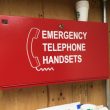Why hype LTE speeds?
As it is now planned, long-term evolution (LTE) is the technology of choice for the 700 MHz broadband spectrum for public-safety use. Unfortunately, equipment vendors are sending the wrong signal to consumers and the public safety community by announcing successful tests at incredible data speeds. This type of hype will set false expectations and cause many to be disappointed in the true data speeds that will be available in the field.
The most recent blatantly misleading press release was issued in December by Nokia Siemens Networks. It touted the completion of a call at 100 Mb/s on the MobileOne (M1) trial LTE network in Singapore and left the impression that this speed will be available commercially — which is not the case. LTE will start out at much lower data rates and speeds will increase over time as enhancements are implemented.
Another issue is how much spectrum will be available for LTE in a given network. LTE was designed to work in as little as 1.25 MHz of spectrum and is scalable up to 20 MHz. Most of the tests have been based on the full 20 MHz, which does not reflect the real world. Most networks will deploy LTE in 5 MHz (5 × 5) or 10 MHz (10 × 10), not the full 20 MHz LTE is capable of supporting.
The idea that real-world LTE networks will be capable of 50 to 100 Mb/s per cell sector is simply not realistic today — maybe in the future, but not today. Today we need to reign in expectations to more reasonable levels. Numerous equipment vendors and networks that are in the process of deploying LTE have indicated to me that in a 10 MHz slice of spectrum (5 × 5), with a three-sector cell site (each sector providing coverage to 120 degrees), we can expect real-world data speeds and capacity of 15 to 20 Mb/s down to the devices and 2 to 5 Mb/s on the uplink.
Further, these speeds and data capacity are shared within a cell sector. A single user within the sector will be able to use all of the speed and capacity, but if the sector is populated with many customers, the data speeds for each will be reduced. When sending and receiving bursts of data, the decrease in speed won’t be as noticeable, unless volume is extremely heavy. But with streaming video, the number of users supported within a cell sector is dramatically reduced. Keep in mind also that if each cell site is capable of three sectors at 20 Mb/s each, we have to be able to handle that data capacity with backhaul to the network. Running a bunch of T-1 lines won’t work; it will take fiber and microwave links to avoid creating choke points that would reduce the available capacity.
LTE public-safety networks can provide a lot of bandwidth for a variety of applications, but they won’t be operating at 50 or 100 Mb/s per cell sector any time soon.
What do you think? Tell us in the comment box below.
Andrew Seybold is a mobile wireless consultant. He will conduct the Andrew Seybold Wireless University March 22 at CTIA Wireless 2010 in Las Vegas. See http://andrewseybold.com/events/wireless-university for more information.
Related Stories

















